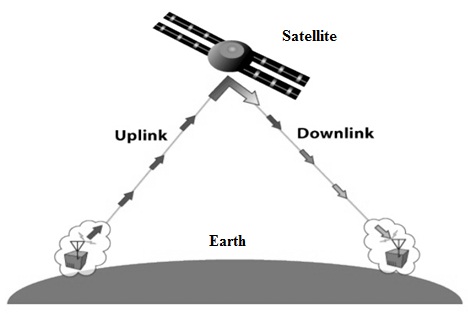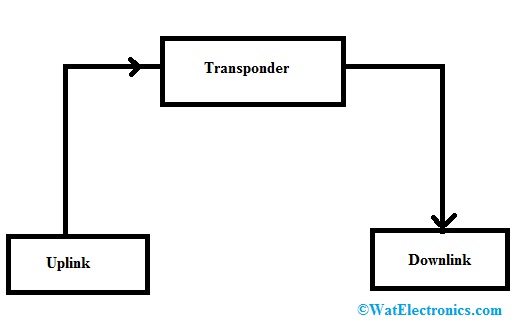The utilization of Satellite Communication worldwide has become common and everywhere in some different applications such as DTH Broadcasting, Television, DSNG, and VSAT to develop unique facilities in terms of outreach as well as coverage. For the past three decades, this technology is used in a large number of commercial as well as common applications. The prospective of the technology for public applications continues to attract ISRO & hard works are influencing the benefits of technology for the betterment of mankind.
Significant proposals followed by ISRO to societal growth comprise telemedicine, education, DMS (Disaster Management System) & VRC (Village Resource Centre) programs. The space technology potential for national development applications is vast.
The world’s first artificial satellite was launched by the Soviet Union namely Sputnik-1 in the year 1957. After eighteen 18 years, an artificial satellite like Aryabhata was launched by India in the year 1975.
What is Satellite Communication?
A satellite definition is a small object that rotates in the region of a larger object within space. The best example of a natural satellite of the globe is the moon. We know that communication is nothing but the sharing of data among two or more entities using any transmission channel or medium. Alternatively, communication can also be defined as transmitting, receiving & processing the data.
So, if communication occurs between any two stations on the earth with a satellite, then it is known as satellite communication. In this kind of communication, electromagnetic waves are utilized like carrier signals to carry the data like audio, voice, video among space and ground.
Need of Satellite Communication
In earlier communication, there are two types of propagation is used up to some distance like ground wave propagation and skywave propagation. The bandwidth used by Ground wave propagation is up to 30MHz frequencies. This kind of communication uses the conditions of the troposphere of the globe.
The bandwidth used by skywave propagation mainly ranges from 30 to 40 MHz with the properties of the ionosphere of the earth. The highest station distance is restricted to 1500KM simply in both the propagations. So, satellite communication conquers this drawback. By providing long-distance communication.

Satellite Communication Working
As the satellites situate at a certain height from the earth, then communication occurs in between two earth stations simply through satellite. So, it conquers the drawback of communication between two stations on the earth because of the curvature of the earth.
Block Diagram
Satellite communications are related to the space mirrors because they assist us in activating the signals like internet data, radio & TV from one face of the earth to another face.
The block diagram of the satellite communication system includes the following. This satellite communication system can be explained through three blocks namely uplink, transponder, and downlink where these components of the satellite communication system & their working are discussed below.

Block Diagram of Satellite Communication
Let us consider the signals from a TV. In the primary phase, the signal transmits from the television to the other face of the earth & first carries to the satellite from the earth station over the earth. So this kind of procedure is called an uplink.
The second stage is transponder like amplifiers, transmitters & radio receivers. The main function of a transponder is to boost the inward signal as well as to modify its frequency so that the leaving signals are not changed. Based on the incoming sources of signal, the transponders will change.
The final stage includes a downlink where the data is transmitted to the receiver end on the globe. It is significant to recognize that generally there is a single uplink & several downlinks.
Types of Satellite Communication
The classification of satellites can be done based on their functions because they are mainly launched into space to perform a specific task. So its design must fulfill its role. There are different types of satellite communication systems like communication, remote sensing, navigation, geocentric orbit type like LEO, HEO, MEO, GPS (global positioning system), GEOs(geostationary satellites), polar, ground, drone, smallsats, CubeSats, nanosats.
From the above-mentioned types of satellites, the artificial satellites are communication type because they communicate with receive signals which are received from earth station & again transmit to other earth station.
Satellite Communication Services
Satellite communication services can be classified into two categories like one-way communication and two-way communications.
One-way Satellite Communication
In this kind of communication, usually, the communication occurs in between either one earth station or several earth stations using a satellite like the transmitter of the first earth satellite to the receiver of the second earth satellite. Here the direction of signal transmission is unidirectional. So some frequently used one-way satellite communications are
- Position services supplied by the radio
- Tracking is an element of space operations services
- Internet services occur through broadcasting satellites
Two-way Satellite Communication
In this kind of communication, the exchange of data can be done in between any two earth stations. The transmission of a signal can be done from the primary earth station to the next earth station so that there are two uplinks & downlinks that occur among the satellite & earth stations.
The communication services provided by the satellites are telecommunications, broadcasting, & data communications. Telecommunication services are telephone calls as well as different services provided to various telephone companies & mobile, wireless & mobile network providers.
Broadcasting services provided by TV & radio to the consumer are mobile broadcasting services whereas satellite TV or DTH services are received by households directly.
Data communications are used to transmit the data from one end to another. In various organizations, the information can be exchanged in between different locations which utilize satellites to assist the data transfer throughout the VSAT (very small aperture terminal) networks.
With the development of the Internet, a major quantity of Internet traffic travels throughout satellites to make the Internet service providers one of the main customers for satellite services.
Factors Affecting Performance
The satellite system performance is mainly associated with the radio signal’s type & its strength used among the satellite & transmitter mounted through the vessel.
The interrelated factors which determine the power requirements, as well as the size of the vessel transmitter, are power accessible within the satellite system & the level where the satellite system can focus on a geographical region.
The radio signal type used by transmitters is related to monitoring control & surveillance of fisheries in the microwave band is extremely reliable & fairly low-powered. The signal is not highly affected through the conditions of atmospheric.
Advantages
The advantages of satellite communication include the following.
- Circuit connections are simple
- The circuit elasticity is outstanding.
- The network can be controlled by the user.
- Possibilities of broadcasting and more bandwidth
- Each corner of the globe can be covered by using a satellite communication system.
- Transmission cost is independent for coverage region
- Coverage area is more as compared to the terrestrial systems
Disadvantages
The disadvantages of a satellite communication system include the following.
- A satellite launching into orbits is an expensive procedure.
- Satellite systems propagation delay is more as compared to conventional terrestrial systems.
- More free space loss
- Initial expenditure is costly.
- Propagation & interference.
- There is a change of frequency blockage or jamming
- If any issue happens within a satellite system then providing repairing activities is difficult.
Applications
The applications of satellite communication systems include the following.
- TV
- Telephone
- Monitoring of Weather Condition and Forecasting
- Military
- Navigations
- Amateur Radio
- TV broadcasting like DTH ( Direct to Home)
- Radio Broadcasting
- Remote sensing applications
- Disaster Management
- Voice communications & Radio Broadcasting
- Internet Access
- Digital cinema
- Internet applications to provide the application of internet connection for GPS applications, data transfer, Internet surfing, and many more.
Please refer to this link to know more about GPS MCQs.
Please refer to this link to know more about Digital Communication MCQs & Moblie Communication MCQs.
Thus, Satellite communication systems are used in vessels, where normally mobiles do not work properly so satellite phones are useful in communication. Satellite phones, Satellite TV, radio, and the internet can operate on the principle of satellite communication. So, this kind of communication is mainly useful in remote regions wherever the facilities of broadband do not work properly. Here is a question for you, what are the different radio frequency bands used by commercial satellites?